|
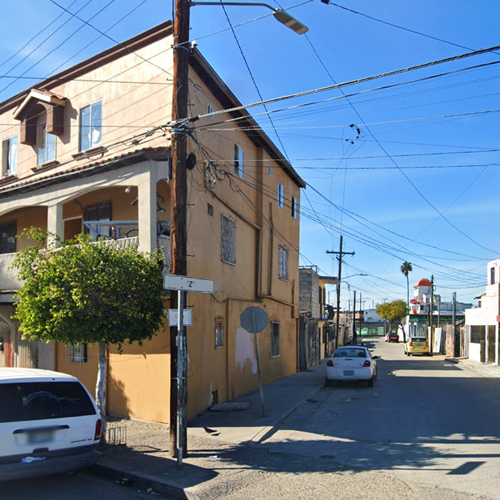 Plaque on the corner of Primer Callejón Zeta and Calle Coahuila in Zona Norte, Tijuana. Photo courtesy Google Streetview |
Tijuana's Oldest Buildings & Sites
By Maria E Curry
March/April 2021
Tijuana's oldest standing historic cultural resources date from the 1900s. They are Craftsman style houses and bungalows made of adobe, wood, brick, and plaster. Many were moved from San Diego through the Puerta Blanca, a gate formerly located close to the U.S. border where a cemetery is now. These houses are difficult to designate because the state government does not want to affect private property. We need to convince politicians and property owners that historic preservation does not mean onerous restrictions or expropriation.
Most of the oldest buildings are located downtown, such as the St. Francis Hotel (1906), which was moved here from Imperial Beach in 1920 and is undergoing renovations. Also on Calle Segunda, the reconstructed ex-Municipal Palace (1920s), La Comercial building (1929), the Hotel Comercial (1928), Cinco de Mayo building (1918), and the Cathedral (Catedral de Nuestra Señora de Guadalupe, 1964) are all in fair condition. So are the rehabilitated Caesar's Hotel (1930), the Jai Alai Palace (1940s), and the Nelson Hotel (1950s), all on Avenida Revolución.
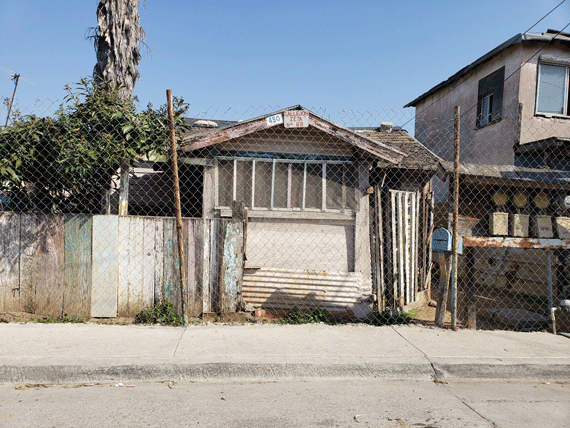 |
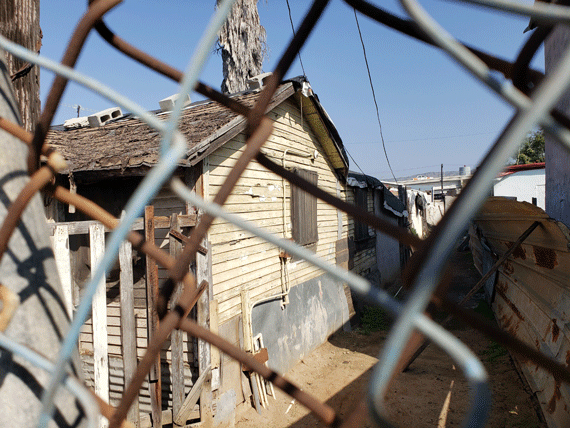 |
Street view of old wood house built in the 1920s and standing at Primer Callejón Zeta #68, Tijuana. Another view, through a fence, of the deteriorated house. |
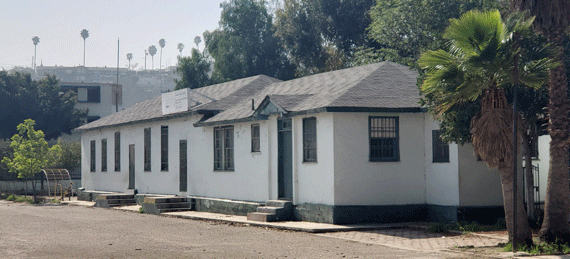 Miguel F. Martinez elementary school, the oldest in Tijuana, on Av. Miguel F. Martinez, Zona Centro. |
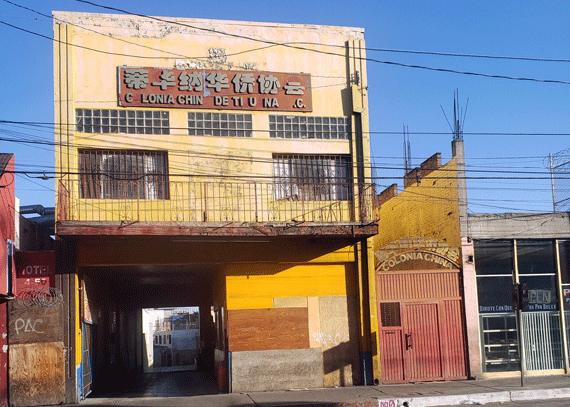 This modest Art Deco building housed the famous Café Flor de Loto at Calle Primera 7931, Zona Centro, Tijuana. Note the sign that reads "Colonia China de Tijuana" in two languages. |
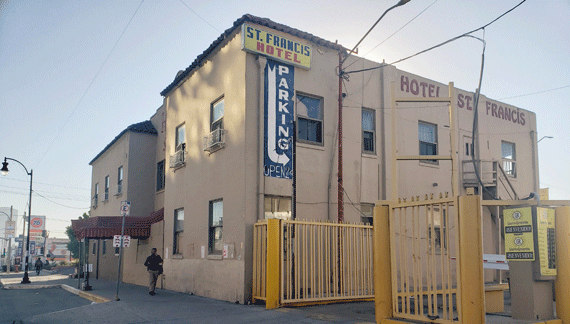 The St. Francis Hotel on Calle Segunda in downtown Tijuana. Built in 1909 in Imperial Beach, California and moved to Tijuana in 1920, it is being remodeled as a boutique hotel. |
In old neighborhoods not far from downtown are more historically significant buildings: the SD&A train depot (1919) in Colonia Libertad; and the Casa de la Cultura (1929), a replica of a brick school in Yuma, Arizona in Colonia Altamira. Old restaurants, stores, movie theaters, markets, schools, churches, and cemeteries also contribute to Tijuana's cultural and architectural heritage.
The Cultural Patrimony Counsel has met only twice with the new state government since 2018, making it almost impossible to protect historic resources. The following are three examples that need recognition.
Primer Callejón Zeta (1800s)
The oldest street in downtown Tijuana runs along the international border. It is the last vestige of El Camino Real Misionero, which connected Alta and Baja California during the 18th and19th centuries. Today, just one old wooden house (c. 1910s) remains, deserving restoration as the sole example of what life was like on this historic street.
Miguel F. Martinez School (1923)
The oldest elementary school in Tijuana, located in Calle Cuarta, was originally known as Nacional School in 1900 and renamed in 1919. Originally, there were three wood structures, but only one rectangular remodeled building with a hipped roof remains. Prominent people in Tijuana's history attended this school.
Café Flor de Loto (1920s)
Located on Calle Primera, this is the last remaining building of a small Chinatown. The two-level structure with a modest Art Deco facade served as a house with a restaurant, but also as a casino for gambling and opium consumption. From 1954 to 2004, a Chinese language school occupied the second floor. The building deserves recognition for its association with Chinese migrants in Tijuana.
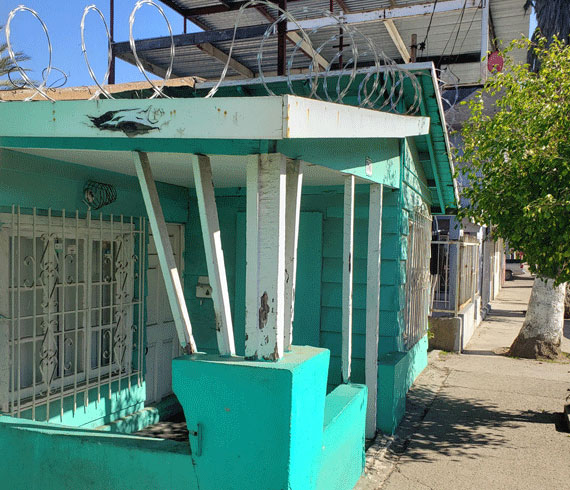 |
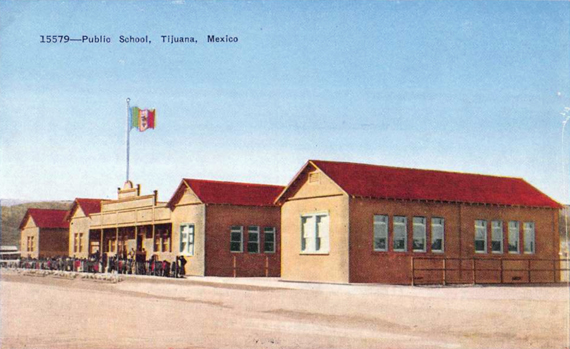 |
Left A deteriorating house (c. 1917) on Calle Primera in Tijuana is threatened by development. Many old houses in the area are being demolished. Right Martinez School as originally built in Tijuana in the 1920s. Courtesy Andres Waldo
All photos by Maria Curry except where otherwise noted. |
|
2025
2024
2023
2022
2021
2020
2019
2018
2017
2016
2015
|











